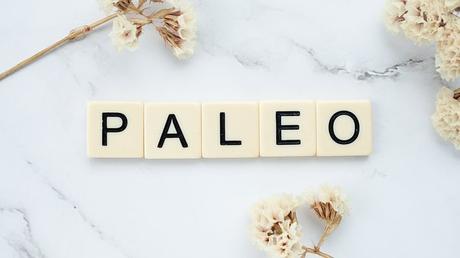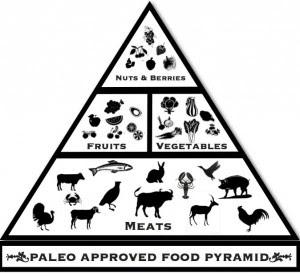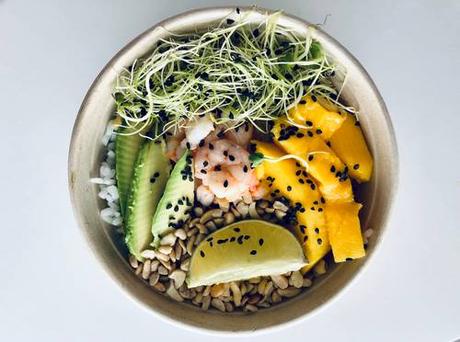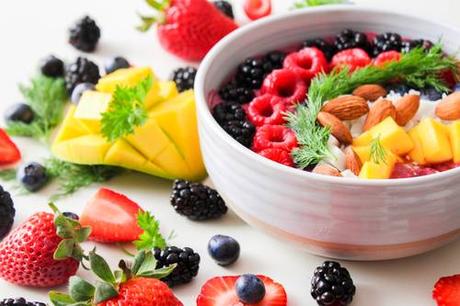What is the Paleo Diet | Quick Recipe For Paleo Diet

What is the Paleo Diet?
That is, what you should eat and what you might not want to eat. Paleo eating can be perceived by the pyramid model shown below.

Photos Source(link)
Most meals consist of animal protein, fat, and vegetables. The idea, then, is to eat, where possible, foods that would have been available to our Stone Age ancestors. The basis of this idea is that our genes have evolved as a result of millions of years of evolution. They are still virtually the same as our Stone Age ancestors and have not had time to adapt to new (Neolithic) foods such as grains.
However, it is good to keep in mind that not all “Stone Age” food is good and not all new food may be harmful to health. Thus, Paleo is not intended to be a play for cavemen, but can be used as a frame of reference when making dietary choices.
Basics of eating Paleo Diet
Brisk animal protein: meat, fish, seafood, birds, all kinds of game, eggs
Vegetables as much as the umbilical cord pulls, based on low-carbohydrate vegetables (e.g., lettuce, cucumber, tomato, cabbage, peppers…) and, if necessary, more carbon-rich roots (such as potatoes and sweet potatoes) or white rice (which seems problem-free for many, even though it's cereal).
Fats: coconut, butter, cocoa, avocado, extra virgin olive oil
Berries, fruits * and nuts/seeds **(* Most carbohydrates should be obtained from roots and rice, but fruit can well be eaten in a couple of days. ** Nuts are limited due to omega fatty acid balance, eg palm per day)
In general: Prefer the right food. It is unprocessed, as additive as possible, and unsweetened. The shorter the product description, the better and preferably no product description at all.
Delicacies of the Day[ Quick Recipe For Paleo Diet ]
Example of one-day meals:
Breakfast: omelet, blueberries with coconut milk and cinnamon (a treat!)
Lunch: Chicken salad with olive oil, apple
Snack: Handed nuts, a couple of carrots
Dinner: Baked salmon and baked roots
I think paleo food is delicious! The web is full of pages with paleo-recipes from which you can draw inspiration for cooking. Paleo eating is also nice in the sense that high protein and high-fat meals keep your blood sugar steady and your hunger is gone for a long time. Because of this, the extra fluctuations in blood sugar and the resulting states of fatigue or the constant need for snacking are eliminated and you feel good and energetic. The feeling of hunger is also much easier to control.
This diet will not have such “side effects if I don’t get food in five minutes of raging and dizziness” type states, but the feeling of hunger will gradually increase. And when you first notice the feeling of hunger, know that you will survive many more hours without eating if the need arises. The stomach can also be eaten properly at once,
Paleo and a lot of spoiled carbs
Paleo isn’t necessarily low-carb, but it’s really strongly carbo-conscious. That is, carbo is eaten as needed and is selected from sources that are not accompanied by high levels of harmful substances (e.g., gluten or other problematic proteins and intestinal irritating lectins).
In addition to domestic roots, good sources of carbo are, for example, sweet potatoes and various winter pumpkins. White rice and potatoes are also starting to “be pale” in the minds of many (the individual suitability of these for themselves is worth testing and if they are starting to pale, they may be left out altogether for 1-2 months during the test).

In my view, a more moderate diet for carbohydrates is appropriate for most people because, unfortunately, most of us don’t exercise too little and thus don’t need a large number of carbs. There are huge individual differences in the need for carbohydrates between people, so it is, therefore, difficult to make precise recommendations on quantities. Some estimates of the number of carbohydrates suitable for most could be 75 to 200 g per day, depending on activity, possible diseases, individual metabolism, insulin sensitivity, etc.
In general, however, the problem with paleo becomes too low rather than excessive carbohydrate intake. One rule of thumb could be that vegetables containing less than five grams of carbohydrates per 100 g are not counted in the daily carbohydrate intake (i.e., lettuce, cabbage, cucumber, tomato, paprika, etc.). Also, several roots like lantern, turnip, and carrot only get carbs of about 5 g / 100 g. Example: You get about 150 grams of charcoal per kilogram of potatoes. That is, the roots should indeed be eaten fairly!
Those who exercise a lot and exercise hard should generally eat carbs and possibly plenty (3-5 grams per day per kilogram of body weight or more if the workout is really hard).

It is a good idea to schedule carbs in the evening and during the day and, if possible, the largest part after a workout, when they are best used due to increased insulin sensitivity. That is, it is good to start in the morning with fat and protein and then towards the evening to increase the number of carbs with meals so that the evening food is eaten with plenty of carbs.
Women are more sensitive than men to the effects of too low carbo. Therefore, I do not recommend ketosis or very low carbo pulling for women regularly and for long periods of time. At first, the feeling may be staggering and your workouts go by, but collapse and hormonal problems can wait around the corner. Therefore, it is good for women to keep enough carbs in their diet, e.g. 100g + per day, and much more if you work out hard.
Eat enough!
Especially with a low-carbo paleo diet, the feeling of hunger can be so low and the energy levels so good that eating can easily be too little or completely forgotten for a meal. Therefore, adequate eating should be ensured. That seems to be a pretty rare problem in modern society! Good rules of thumb regarding the amount of food are:
Lots of protein. Eat at least 1.5 grams of prons per kilogram of body weight. Example calculation of protein requirement: 100 g of beef contains about 20 g of protein, ie a person weighing 75 kg should eat more than 550 g of meat/fish/chicken per day to get enough protein. Strong exercisers should eat at least 2 g of protein per kilogram of body weight.
Carbohydrates as needed. If you do not move much, a suitable amount could be about 75-125 g (count only the actual sources of carbo, ie roots, berries, fruits, rice, etc., ie no salads, cucumbers, cabbages, etc. from which practically no carbo are shed). Women prefer over 100 g per day. Athletes can accumulate 200 g or much more of the day's meals, with a large portion of the post-workout meal possible.
The rest of the energy needs can be met with fats
ORIGINALLY WRITTEN BY - FITNESS YODHAPhotos Source(link)

